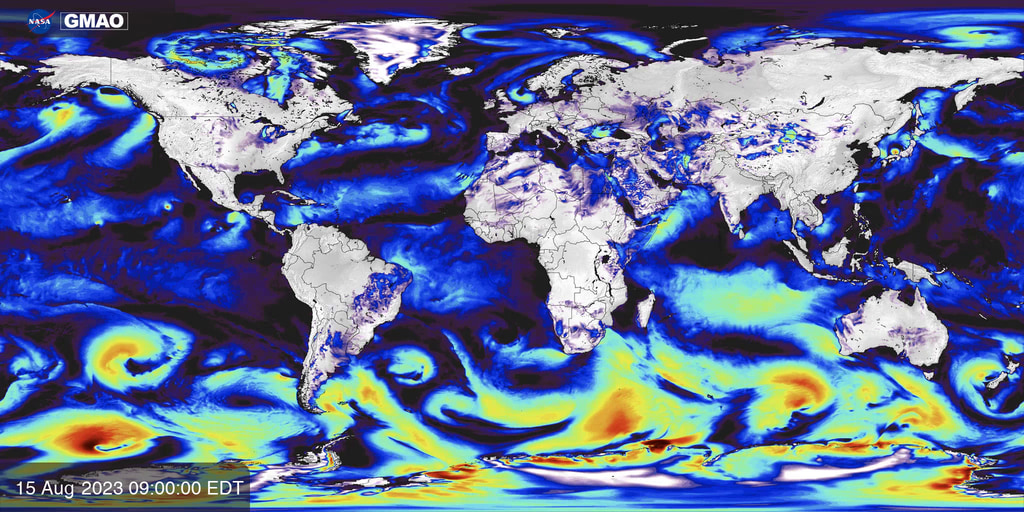GEOS-FP Relative Humidity
Relative humidity is calculated using temperature and moisture fields from NASA’s GEOS-FP system. GEOS-FP combines millions of weather observations with a predictive model to create a global best estimate of weather conditions that are used to begin a forecast.
Weather models begin their forecasts by integrating observations from ground stations, aircraft, balloons, and a growing constellation of Earth observing satellites to estimate the most realistic atmospheric state. The Goddard Earth Observing System Forward Processing (GEOS-FP) system is a research model maintained by NASA’s Global Modeling and Assimilation Office to demonstrate innovative new ways to use satellite data to improve predictions of weather, air quality, and greenhouse gases and to help NASA collect new observations of our home planet.
Relative humidity is the ratio of water vapor in the atmosphere relative to the amount of water vapor that would be present if the air were saturated. It is calculated by using a combination of near surface temperature and water vapor fields. Variations reflect differences in daytime and nighttime relative humidity and the influence of large scale weather systems. Near surface humidity is an indicator of the likelihood of rain or fog and also has implications for human health. Humidity influences the evolution of air pollution events and high relative humidity can increase the risk of developing heat-related illnesses on very hot days.
For More Information
Credits
Please give credit for this item to:
NASA's Scientific Visualization Studio
-
Visualizer
- Joseph V. Ardizzone (NASA/GSFC)
Series
This page can be found in the following series:Datasets used
-
GEOS-FP
ID: 1196Documentation: Lucchesi, R., 2018: File Specification for GEOS FP. GMAO Office Note No. 4 (Version 1.2), 61 pp, available from https://gmao.gsfc.nasa.gov/pubs/docs/Lucchesi1203.pdf
This dataset can be found at: https://fluid.nccs.nasa.gov/weather/
See all pages that use this dataset
Note: While we identify the data sets used on this page, we do not store any further details, nor the data sets themselves on our site.
Release date
This page was originally published on Tuesday, September 26, 2023.
This page was last updated on Friday, January 9, 2026 at 7:46 PM EST.






